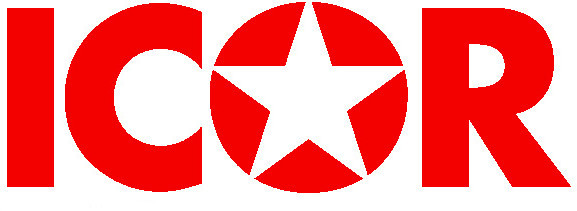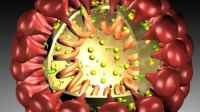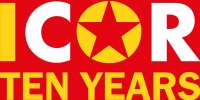Stalin's und Trotsky's Role in the October Revolution
Existing translations
For the international revolutionary movement the evaluation of Stalin's role in and for the October Revolution remains of great current importance.
Because he had been banished to the Polar Circle since 1913, Stalin had been excluded from party work. First with the bourgeois-democratic February Revolution in 1917 did he attain freedom. Contrary to some exaggerations spread later by people around him, he stated in 1926: “Lastly, I recall the year 1917, when, by the will of the Party, after my wanderings from one prison and place of exile to another, I was transferred to Leningrad. There, in the society of Russian workers, and in direct contact with Comrade Lenin, the great teacher of the proletarians of all countries, in the storm of mighty clashes between the proletariat and the bourgeoisie, in the conditions of the imperialist war, I first learnt what it means to be one of the leaders of the great Party of the working class. … There, in Russia, under Lenin’s guidance, I became a master workman in the art of revolution.” (Stalin, Works, Vol. 8, p. 184) In his revolutionary work, which he began in 1898, aside from his role as an untiring organizer of workers' struggles before 1917, Stalin had led ideological-political debates in two fields which had greatest importance for the later success of the October Revolution.
The central problem of revolutionary strategy and tactics in tsarist Russia was the solution of the peasant question. With Lenin as a model, whose first theoretical work dealt with the development of agriculture, Stalin took this up at an early time. He turned against the illusory ideas of the Party of Socialist-Revolutionaries, who wanted to develop a “socialism” from the villages through the distribution of land without calling the capitalist mode of production into question. Against the opportunist ideas of the Mensheviks, who propounded the leading role of the bourgeoisie in the struggle against tsarism, he emphasized the significance of the peasants as the main ally. Without satisfying the demands of the peasants for land through the revolutionary expropriation of the ownership of large estates, the October Revolution could not have been conducted. It was clear that the creation of millions of single farms did not yet signify a socialist mode of production, but agriculture would be under the political leadership of the proletariat, the democratic dictatorship of the workers and peasants. In 1906 Stalin emphasized: “Every question must be presented dialectically, i.e., we must never forget that everything changes, that everything has its time and place, and, consequently, we must also present questions in conformity with concrete circumstances. That is the first condition for the settlement of the agrarian question.” (Stalin, Works, Vol. 1, p. 235) In contrast Trotsky proclaimed one-sidedly in 1917 “Down with the Tsar, for a workers' government.” He regarded the dictatorship of the proletariat as being directed against the peasants. This was repudiated by Lenin and Stalin.
The second key for the successful conducting of the October Revolution was the correct solution of the national question. In his fundamental writing of 1913, Marxism and the National Question, he fought important preliminary ideological battles for the Bolsheviks. In March 1917 he presented a “positive program” on this basis: “The social basis of national oppression, the force which animates it, is the obsolescent landed aristocracy. … Thus the way to put an end to national oppression and to create the actual conditions necessary for national liberty is to drive the feudal aristocracy from the political stage, to wrest the power from its hands. … It is therefore necessary to proclaim: 1) political autonomy (not federation!) for regions representing integral economic territories possessing a specific way of life and populations of a specific national composition, with the right to conduct “affairs” and “tuition” in their own languages; 2) the right of self-determination for such nations as cannot, for one reason or another, remain within the framework of the integral state.” (Stalin, Works, Vol. 3, pp. 17–21) After the revolution Stalin logically became a commissar (=minister) for the affairs of nationalities.
In the strategy and tactics for the transition from the bourgeois-democratic to the socialist revolution the Bolsheviks showed uncertainties for a short time at the beginning of 1917. These were eliminated after Lenin's return from exile through his April Theses. Stalin self-critically stated: “The Party … groped its way towards this new orientation. It adopted the policy of pressure on the Provisional Government through the Soviets on the question of peace and did not venture to step forward at once … to the new slogan of power to the Soviets. … At that time I shared this mistaken position with other Party comrades and fully abandoned it only in the middle of April, when I associated myself with Lenin’s theses.” (Stalin, Works, Vol. 6, p. 348)
At the subsequent party congress in May, Stalin was elected into the central committee again after his long exile and worked in its Politburo as Lenin's closest associate. When after the unsuccessful July uprising of 1917 the Bolsheviks were forced into illegality once again and Lenin had to leave the country, he took over the operational leadership of the party. Kornilov's military coup in August 1917 intensified the situation. Stanislav Pestkovsky's reminiscences, published in 1922, write the following on this: “In the days of the Kornilov affair … I used to run into Stalin frequently in the Smolny Institute…. Here I observed that the main work of preparation for the October revolt was conducted by three members of the Central Committee, Stalin, Sverdlov, and Djerjinsky. The Petrograd Committee and the military organization worked under their guidance. It was Stalin who had exclusive charge of the political direction of the preparations. He was also the director of the party organ. … But not a single party conference, not a serious organizational meeting of any consequence, was held without Stalin’s addressing it. The active party members knew him well on account of that.”* However, Stalin was less known in public. That led to external observers, as, for example, John Reed in his book, Ten Days that Shook the World, failing to recognize Stalin's actual role and emphasizing Trotsky instead. Trotsky was first admitted to the party at the 6th Party Congress in August 1917 by recommendation of Stalin. It was there also that a motion inspired by Trotsky was rejected, the content of which was that the seizure of power should only take place if the revolution was successful in Western Europe. When Trotsky later tried to depict himself as having been the actual leader of the October Revolution, Stalin stated succinctly, “Let us now pass to the legend about Trotsky’s special role in the October uprising. The Trotskyites are vigorously spreading rumours that Trotsky inspired and was the sole leader of the October uprising. … I am far from denying Trotsky’s undoubtedly important role in the uprising. I must say, however, that Trotsky did not play any special role in the October uprising, nor could he do so; being chairman of the Petrograd Soviet, he merely carried out the will of the appropriate Party bodies, which directed every step that Trotsky took.” (Stalin, Works, Vol. 6, p. 341) Actually, the committee of five elected for the task of directly leading the uprising was composed of Sverdlov, Dzerzhinsky, Bubnov, Uritsky and Stalin. Trotsky got his instructions from there.
Dieter Klauth, MLPD Rote Fahne, Editorial Staff/History
Document Actions




